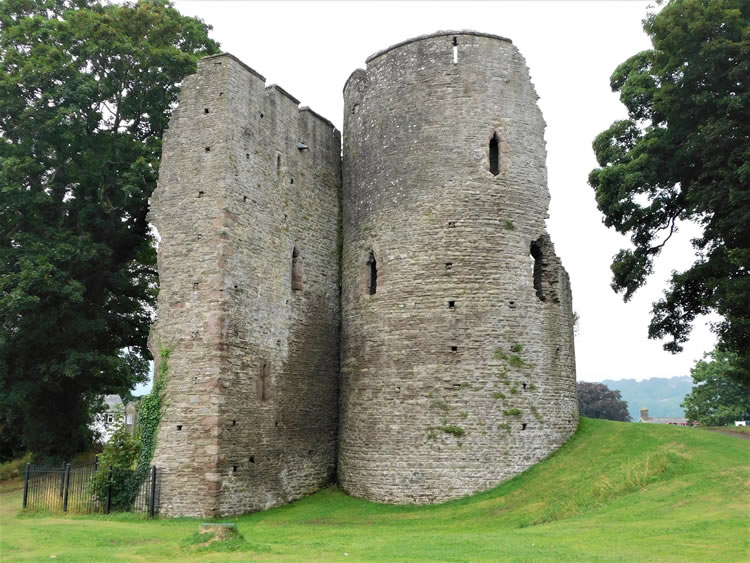The History of Crickhowell Castle
Architectural and Strategic Foundations
Crickhowell Castle, a Grade I listed building now largely in ruins, stands as a historical monument in Crickhowell, Wales. Its strategic location on a spur near the River Usk, elevated above the town planned around it, underscores its significance in medieval military and social structures. The castle’s origins as a motte and bailey fortification, built around 1121 by Robert Turberville under Bernard de Neufmarché, reflect the Norman influence and the turbulent early years marked by Welsh resistance, notably the 1172 attack led by Seisyllt ap Rhirid.
The Turberville Era and Transition
The Turberville family’s connection with the castle spans generations, from its founding to the stewardship under Hugh Turberville by 1273. This era saw Crickhowell Castle evolve from a timber fortress to a stone fortification, a transformation initiated in part by Sybil Turberville’s marriage to Sir Grimbold Pauncefote around 1242. Their union not only fortified the castle physically but also reinforced the familial and political alliances crucial for maintaining power in the volatile Welsh Marches.
The Pauncefote Influence and Reinforcement
Sir Grimbold Pauncefote’s tenure marked a significant phase in the castle’s history, with the addition of substantial stone towers and a large bailey, reflecting the status of Crickhowell Castle as a bastion for Royal allies. The later involvement of the Mortimer family and the castle’s decline in the 14th century illustrate the shifting fortunes of such estates in medieval politics and warfare. Read more here about Sir John Pancefote.
Glyndŵr’s Rebellion and the Castle’s Decline
The early 15th century brought new challenges with the uprising led by Owain Glyndŵr. On the command of King Henry IV in 1400, Sir John Pauncefote, great-grandson of Sir Grimbold, refortified the castle in anticipation of conflict. Despite these efforts, Glyndŵr’s forces largely destroyed Crickhowell Castle around 1403, marking the beginning of its abandonment and the ensuing centuries of stone-robbing that left it in ruins.
The Legacy and Archaeological Insights
Today, the remnants of Crickhowell Castle, including the motte, the buried foundations of the shell keep, and traces of the bailey, offer a glimpse into its past. The so-called “Ivy Tower,” once thought to be a 14th-century relic of the castle, has been revealed through archaeological surveys to be a later addition unrelated to the castle’s original structures. This finding, along with 19th-century engravings, provides valuable insights into the castle’s architectural evolution and its role in the historical landscape of Crickhowell.
Reflections on Crickhowell Castle’s Storied Past
Crickhowell Castle’s rich history, from its Norman origins to its role in the conflicts and alliances that shaped medieval Wales, reflects the complex tapestry of Welsh and English heritage. The castle’s strategic importance, architectural transformations, and the legends of the families who called it home echo through the ages, offering a window into the lives, struggles, and resilience of those who lived in the shadow of its walls. As we explore the ruins and recount the tales of Crickhowell Castle, we are reminded of the enduring allure of medieval history and the architectural marvels that continue to captivate the imagination.

